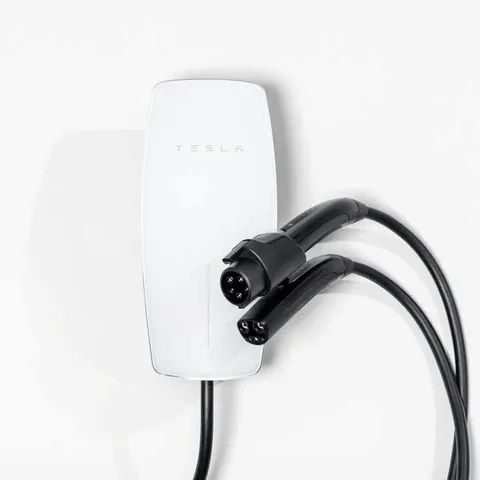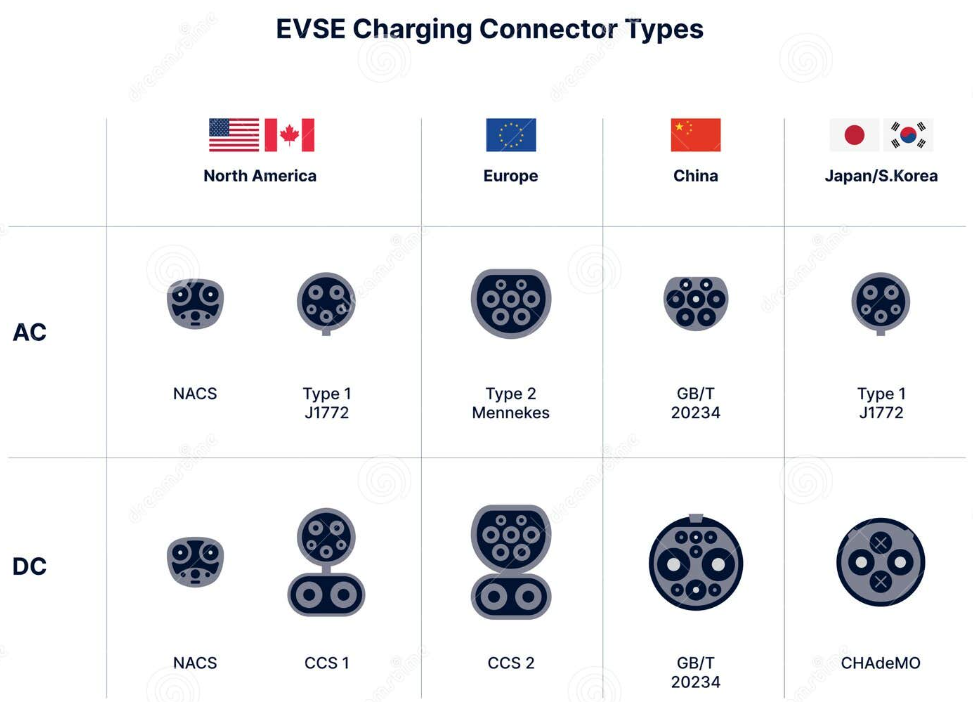As electric vehicles (EVs) continue to gain popularity, the need for efficient and reliable home charging solutions has become increasingly important. For Tesla owners and those considering vehicles compatible with the North American Charging Standard (NACS), selecting the right home charger is a critical decision. This guide will walk you through everything you need to know about NACS, its advantages, and how to choose the best home charger for your needs.

The North American Charging Standard (NACS) is a EV charging connector interface standard developed by Tesla Inc. Initially introduced in 2012 as a proprietary charging interface for Tesla vehicles, NACS has since been made available for use by other automakers and charging network operators. This move has positioned NACS as a potential competitor to the Combined Charging System (CCS), which is widely used by other automotive manufacturers in North America (CCS1) and Europe (CCS2).
One of the most notable differences between NACS and CCS is the size of the charging interface. NACS features a much smaller and more compact design because it uses the same pins for both AC (alternating current) and DC (direct current) charging. This shared pin configuration simplifies the physical design of the connector but requires sophisticated control electronics to manage the switching between AC and DC power modes. These electronics ensure safe and efficient power distribution from the charging inlet to the vehicle’s battery pack via the onboard charger (OBC) and other power distribution systems.
While Tesla has been the primary user of NACS, the company’s decision to open the standard to other manufacturers and charging networks could lead to broader adoption in the future. However, as of now, the Tesla Supercharging network remains the only charging infrastructure with native support for both AC and DC fast charging using NACS. Non-Tesla EVs equipped with the J1772 connector can still access Tesla’s Wall Connector, Mobile Connector, or Destination Chargers by using a Tesla-to-J1772 adapter.

For many EV owners, the convenience and cost savings of home charging make it a worthwhile investment. While it’s possible to charge an EV using a standard 120-volt outlet and the cable that comes with the vehicle, this method is extremely slow, typically adding only about 3 miles of range per hour. For drivers who rely on their EVs for daily commuting or frequent travel, this level of charging speed is often insufficient.
Installing a 240-volt Level 2 home charger—also known as electric vehicle supply equipment (EVSE)—can significantly improve charging speeds, adding 25 miles of range or more per hour depending on the vehicle and charger combination. Beyond the speed advantage, home charging is generally more cost-effective than using public charging stations, especially if you can take advantage of off-peak electricity rates. Additionally, having a home charger eliminates the need to visit public charging stations, saving time and providing the convenience of starting each day with a fully charged battery.
Selecting the best NACS-compatible home charger involves considering several key factors. Below, we’ve outlined the most important features to evaluate when making your decision:
The amperage of your home charger will directly impact charging speed. Most residential chargers operate at 40 or 50 amps, but some homes can support 80-amp chargers. While higher-amperage chargers are more expensive, they can nearly double the charging speed for compatible vehicles. Be sure to check your home’s electrical capacity and your vehicle’s charging capabilities before making a decision.
The length of the charging cable is an often-overlooked but crucial factor. A longer cable provides greater flexibility in terms of where you can mount the charger and how easily you can reach your vehicle’s charging port. Most charging cables range from 20 to 25 feet in length, and we recommend opting for the longest cable you can afford. This is especially important if you anticipate owning different EV models in the future, as charging port locations can vary between vehicles.
A well-designed cable management system can make your charging experience more convenient and your garage tidier. Look for chargers that include a hook or holster for wrapping the unused portion of the cable. Some models even allow you to mount the holster separately from the main unit, which can be particularly useful in tight spaces like single-car garages.
Before purchasing a charger, measure the available space in your garage or installation area. Some chargers are bulkier than others, and a unit that protrudes too far from the wall or takes up too much space could limit your placement options. Compact or narrow chargers may be better suited for smaller spaces, such as the strip of wall between two garage doors.
Many modern EV chargers come equipped with smart features that allow you to control charging via a mobile app. These features can include the ability to schedule charging during off-peak hours, monitor energy usage, and receive notifications when charging is complete. If your vehicle doesn’t already offer these capabilities, choosing a charger with built-in smart features can help you save money on electricity and optimize your charging routine.
While NACS is currently most closely associated with Tesla, its growing adoption by other automakers means that a NACS-compatible charger could be a smart long-term investment. However, if you own a non-Tesla EV or plan to switch between different brands, consider a charger that supports multiple standards or comes with adapters for added flexibility.
Installing a Level 2 home charger typically requires professional electrical work, including the installation of a 240-volt circuit. Be sure to factor in the cost of installation when budgeting for your charger. Additionally, check whether your local utility company offers rebates or incentives for installing a home EV charger, as these programs can help offset the upfront costs.
While Tesla’s Wall Connector is the most obvious choice for NACS-compatible home charging, there are other options worth considering, especially if you’re looking for additional features or greater flexibility. Here are a few top picks:
Pros: Native NACS support, sleek design, up to 48 amps of power, Wi-Fi connectivity for software updates.
Cons: Limited compatibility with non-Tesla vehicles without an adapter.
Pros: Versatile amperage settings (up to 50 amps), compatible with multiple EV brands using adapters, smart charging features.
Cons: Requires a J1772 adapter for NACS vehicles.
Pros: Smart charging capabilities, compact design, compatible with a wide range of EVs using adapters.
Cons: Adapter required for NACS compatibility.
Choosing the best NACS home charger involves careful consideration of your vehicle’s needs, your home’s electrical capacity, and your personal preferences. By prioritizing factors such as amperage, cable length, smart features, and compatibility, you can find a charger that meets your requirements and enhances your EV ownership experience. As the adoption of NACS continues to grow, investing in a high-quality home charger today can provide long-term benefits, ensuring that you’re ready for the future of electric mobility. Whether you opt for Tesla’s Wall Connector or a third-party solution, the convenience and cost savings of home charging make it a decision you won’t regret.
